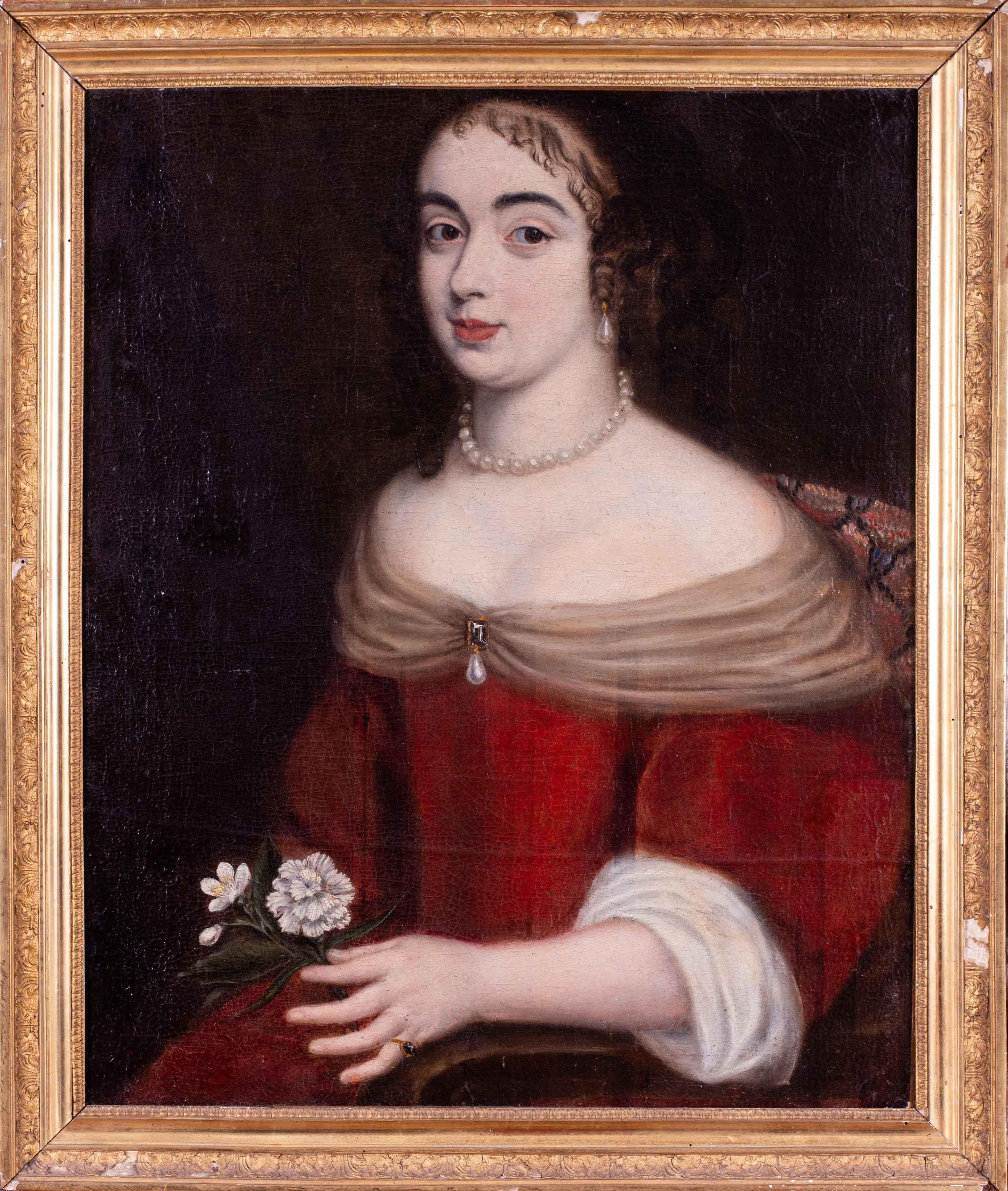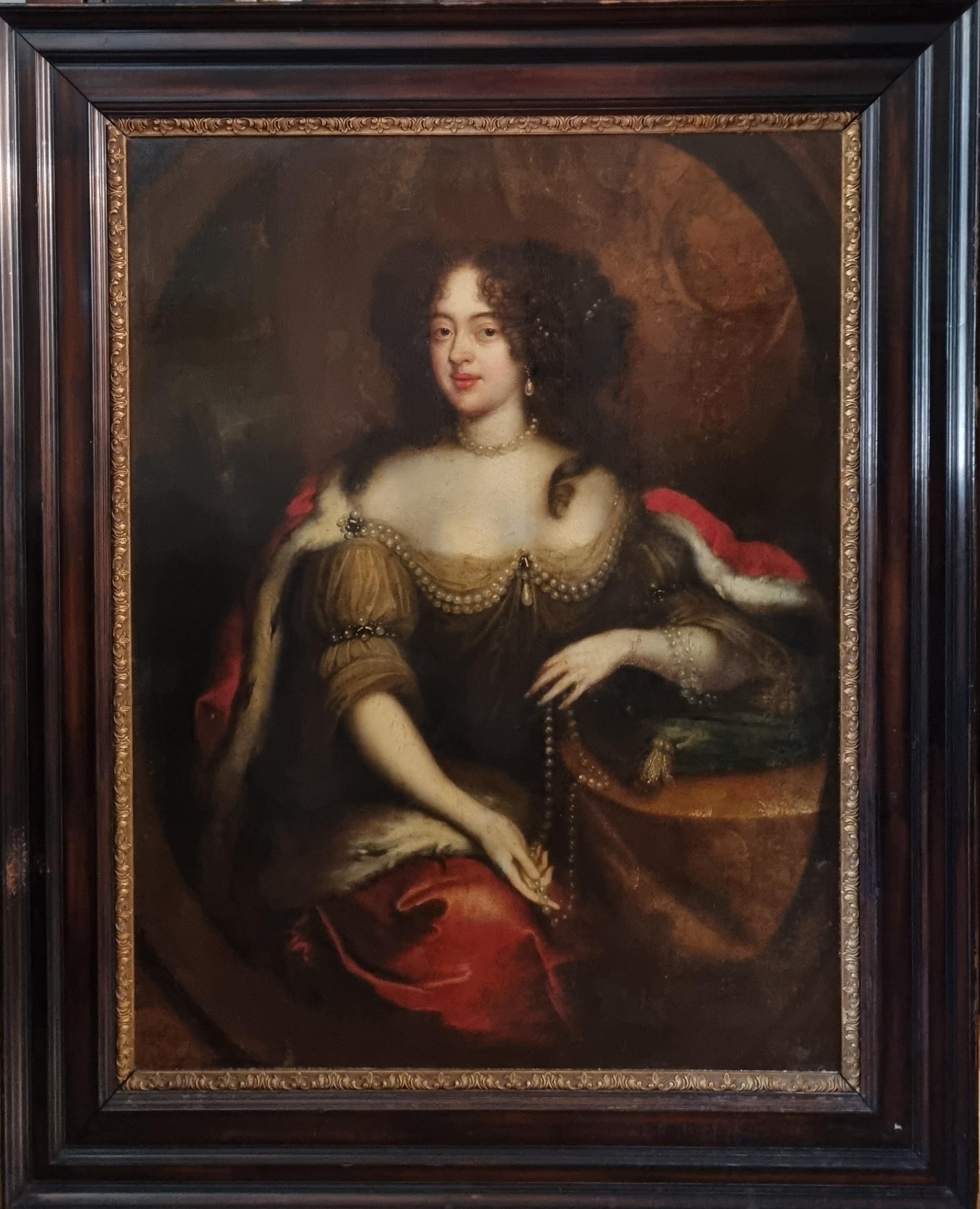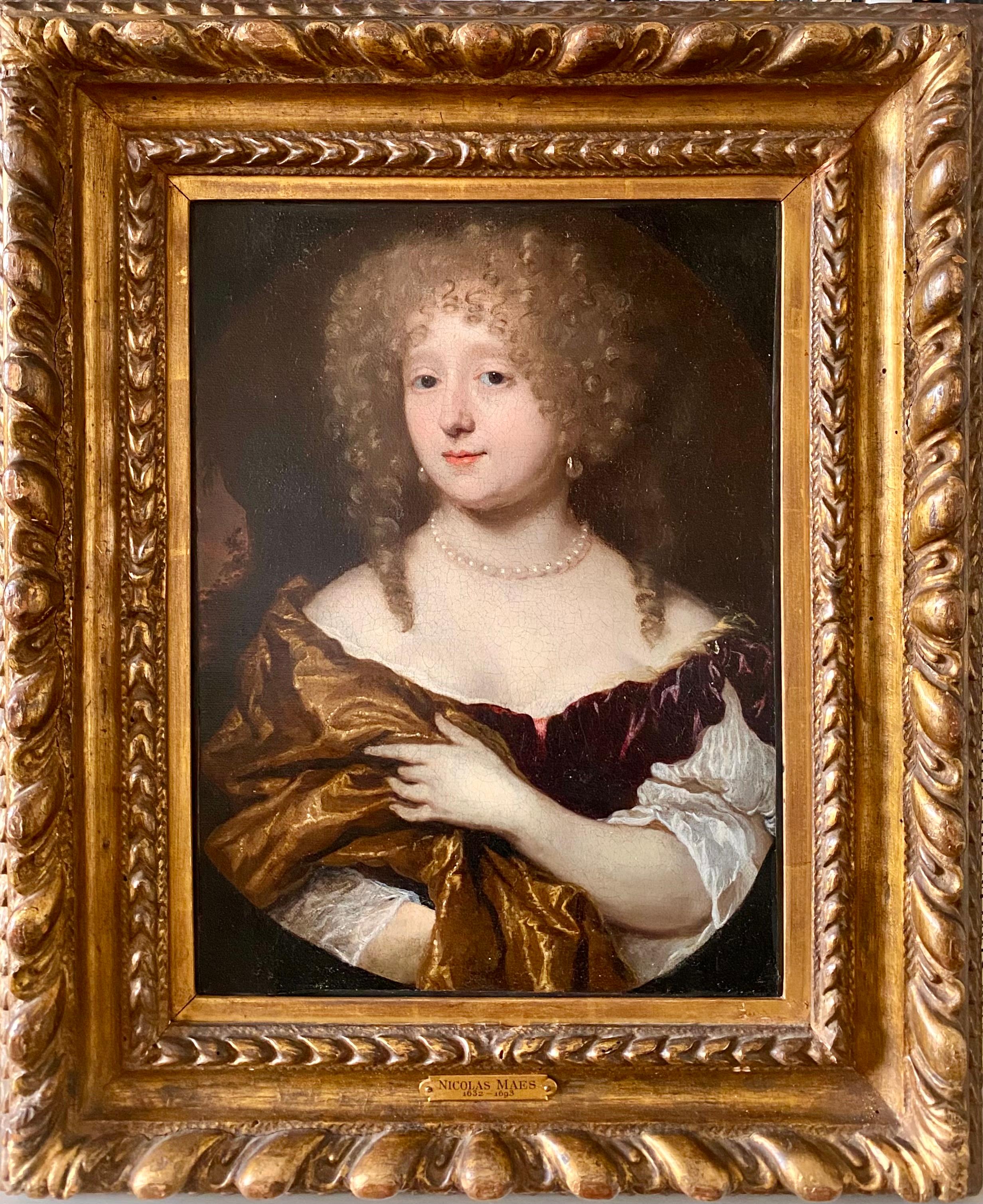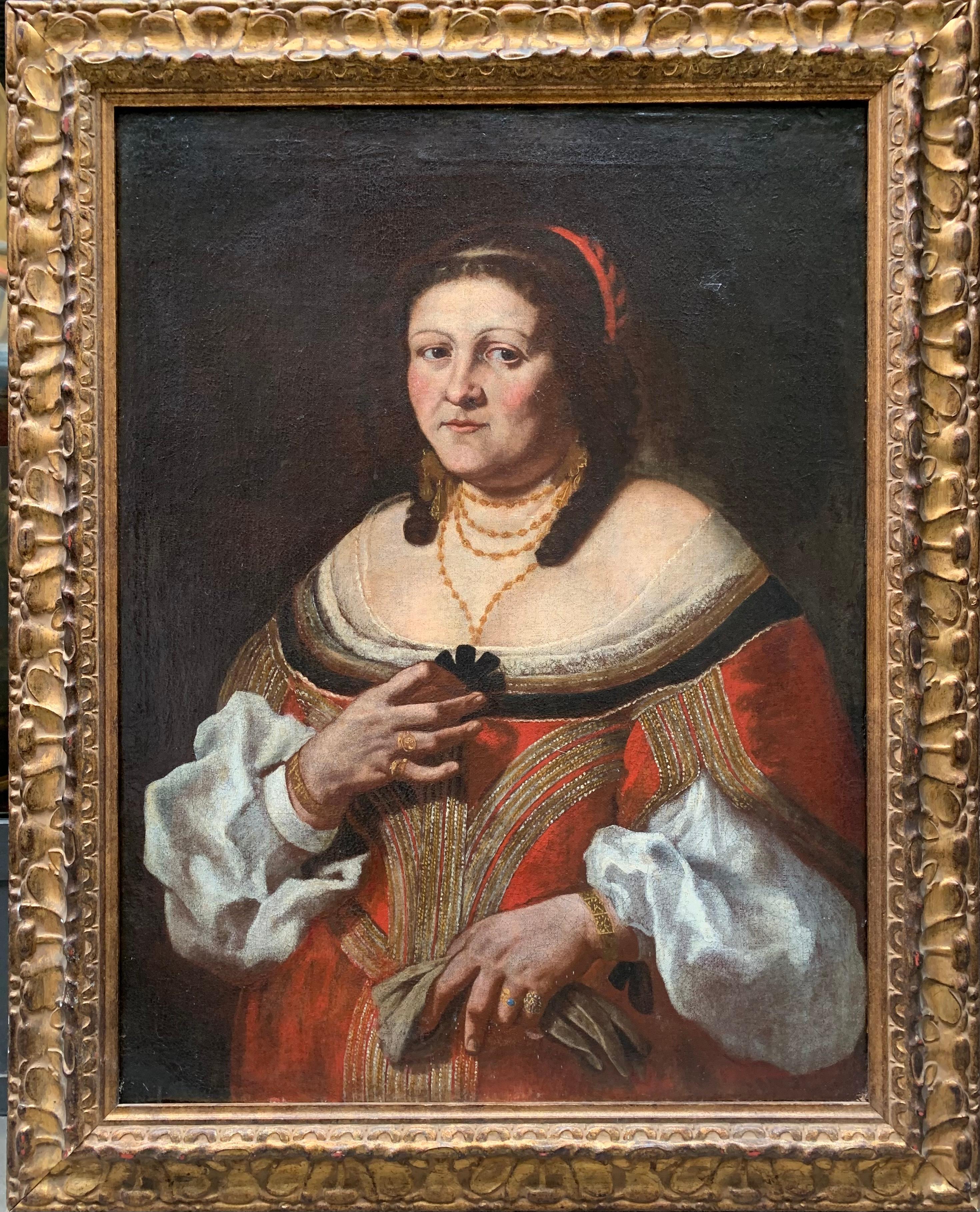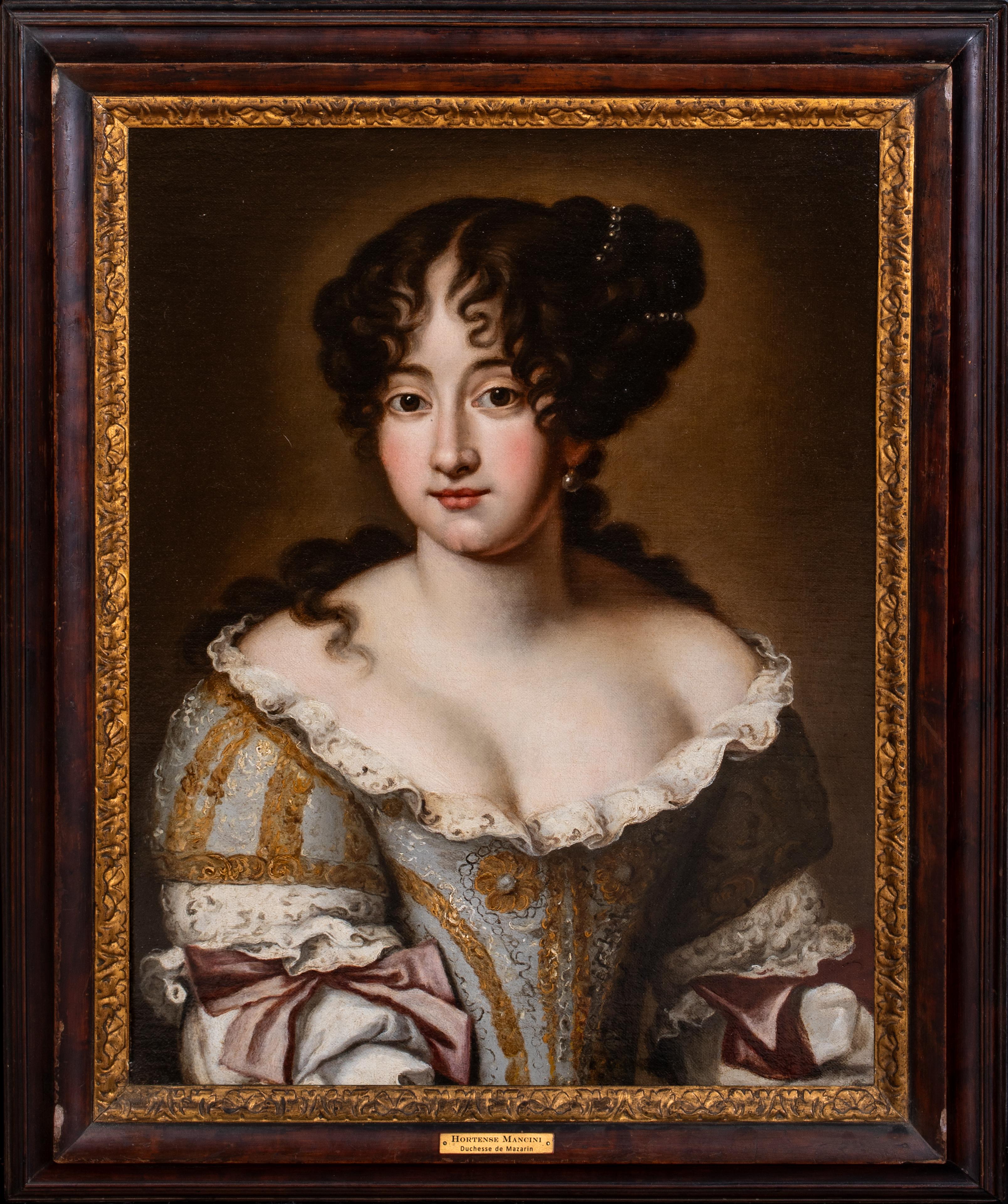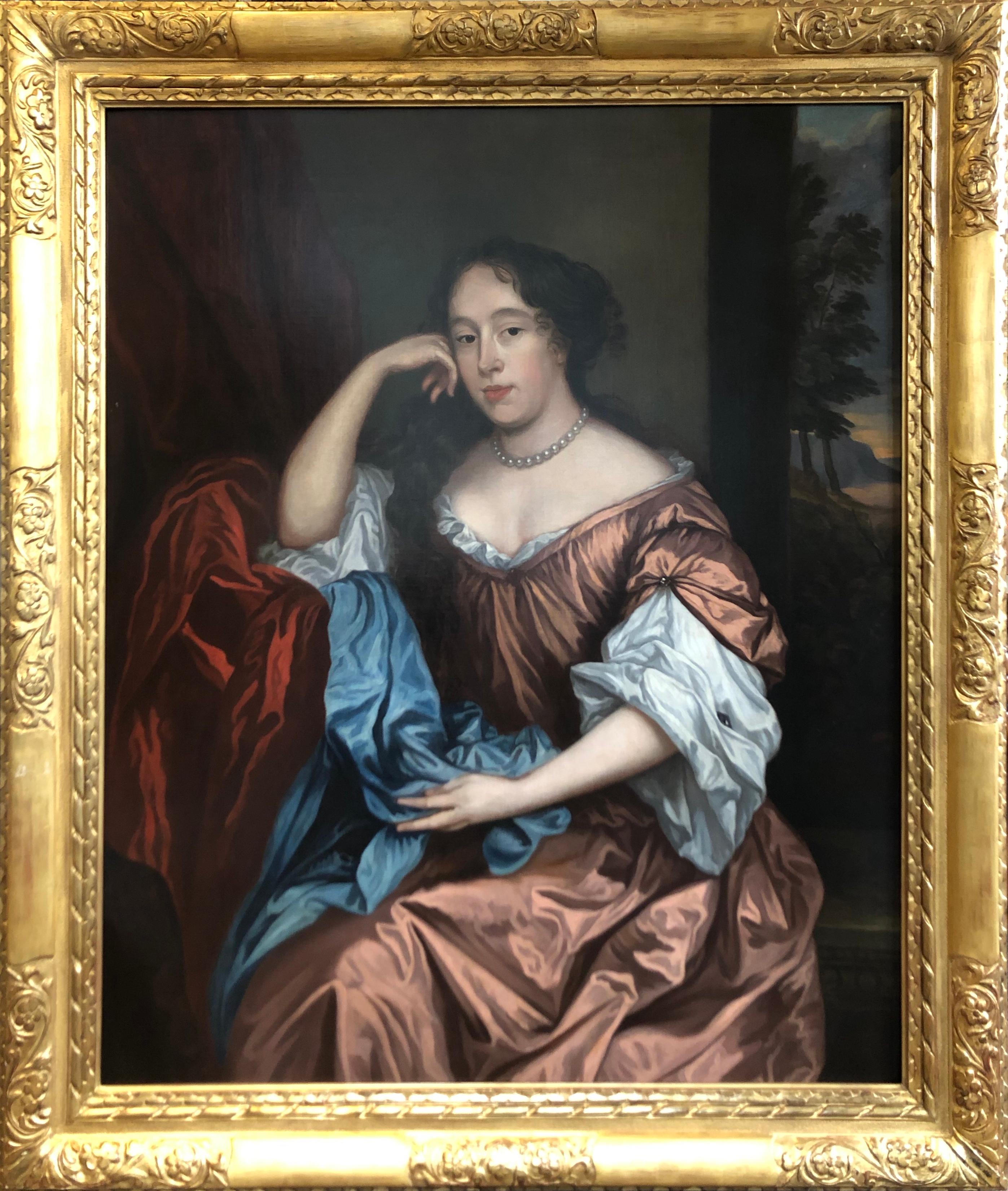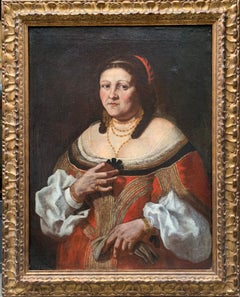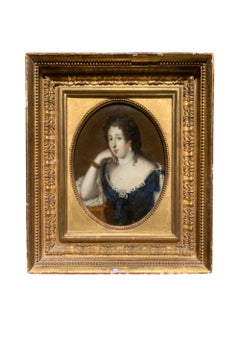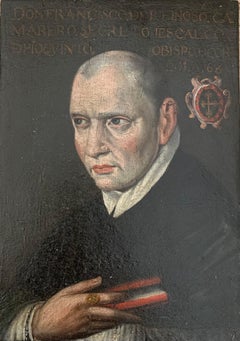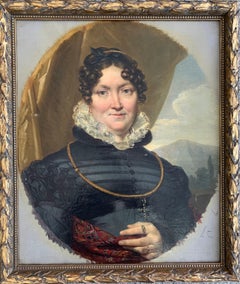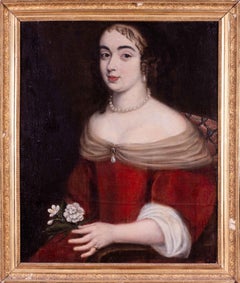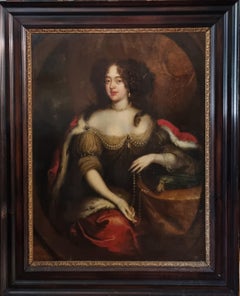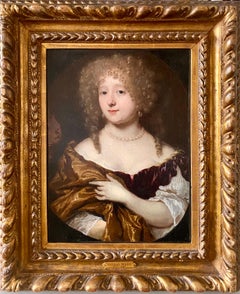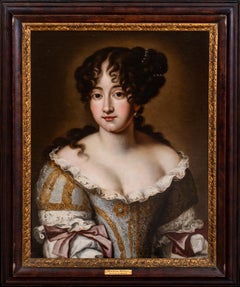Items Similar to Portrait of a Lady . Louis Ferdinand Elle the Younger. ( Paris, 1612-1689), attrib
Video Loading
Want more images or videos?
Request additional images or videos from the seller
1 of 20
Portrait of a Lady . Louis Ferdinand Elle the Younger. ( Paris, 1612-1689), attrib
$2,933.08
$4,190.1130% Off
£2,163.60
£3,090.8530% Off
€2,450
€3,50030% Off
CA$4,063.93
CA$5,805.6130% Off
A$4,409.98
A$6,299.9730% Off
CHF 2,336.90
CHF 3,338.4330% Off
MX$54,086.25
MX$77,266.0730% Off
NOK 28,918.98
NOK 41,312.8230% Off
SEK 27,326.90
SEK 39,038.4330% Off
DKK 18,656.28
DKK 26,651.8330% Off
About the Item
Portrait of a lady .
Louis Ferdinand Elle the Younger. ( Paris, 1612-1689), attributed.
Circa 1680.
Oil on canvas, resting on cardboard.
In 19th-century giltwood frame.
A female portrait recently appeared in our gallery from a private collection, the portrait was at first attributed to the Dutch school.
The assessment of the painting's artistic qualities was complicated by its condition: the painting was hidden under a very thick layer of old varnish.
Subsequent cleaning of the painting revealed a high-class original painting by the author. After complex research, the painting was clearly attributed to the French school, and its dating, due to the characteristics of the costume and hairstyle, began to vary between 1670 and 1690.
A stylistic analysis of the portrait allows us to attribute its authorship to the outstanding French portraitist Louis Ferdinand Elle.
After receiving his early artistic training in the workshop of his father Ferdinand Elle (1570 in Mechelen - 1637 in Paris), Louis Ferdinand began an independent career quite early. Thanks to his father's clients, the artist quickly strengthened his position at court.
Elle's youthful and mature portraits (for example, the portrait of Louis XIV in armor, Metz, Musée de la Cour d'Or) show how great an influence her father's work had on the artist. The artist uses established (but somewhat archaic) portraiture from around 1620, characterized by a somewhat elongated silhouette of the figure, soft modeling of light and shadow, and an extremely generalized interpretation of the face.
The artist remained devoted to this scheme for quite a long time, although the portrait formula in France was undergoing significant changes.
All the more unexpected is the radical change in the style of Elle's portraits in the last years of her life, in the 1680s.
This was related to the arrival in Paris of the greatest portrait painter Louis Ferdinand Voet.
Voet's manner, which Pope Innocent XI called "an instrument of voluptuousness" (which is why Voet was forbidden to work in Rome), proved to be incredibly attuned to the artistic atmosphere in Paris. Elle's style begins to resemble Voet's work: her painting becomes more transparent, incredible freedom in technique appears, and her images are full of sensual charm.
A small portrait of an unknown lady from Alina Malova's gallery collection is an excellent example of Elle's latest work.
The painting technique amazes with its virtuosity; it is free and artistic.
Shape modeling is constructed using several artistic techniques simultaneously.
Using light, the artist determines the volume, but completes the form by using the unfinished effect. Interesting figurative interpretation of the model.
A feature of Elle's entire work has been her very personal and intimate view of the model. The dialogue between the person depicted and the viewer in El's work is based on semi-emotions, a technique inherited from his father's art. This is particularly evident in the female portrait of our gallery.
A slight tilt of the head, a gentle gaze, and a slight half-smile create the charm of the image and seem to anticipate the 18th-century French portrait.
- Attributed to:Louis Elle (Ferdinand) (1612 - 1689)
- Dimensions:Height: 23.23 in (59 cm)Width: 20.08 in (51 cm)Depth: 2.37 in (6 cm)
- Medium:
- Movement & Style:
- Period:1680-1689
- Condition:
- Gallery Location:Firenze, IT
- Reference Number:1stDibs: LU2464213224152
About the Seller
4.9
Vetted Professional Seller
Every seller passes strict standards for authenticity and reliability
Established in 2016
1stDibs seller since 2023
81 sales on 1stDibs
Typical response time: 6 hours
- ShippingRetrieving quote...Shipping from: Firenze, Italy
- Return Policy
Authenticity Guarantee
In the unlikely event there’s an issue with an item’s authenticity, contact us within 1 year for a full refund. DetailsMoney-Back Guarantee
If your item is not as described, is damaged in transit, or does not arrive, contact us within 7 days for a full refund. Details24-Hour Cancellation
You have a 24-hour grace period in which to reconsider your purchase, with no questions asked.Vetted Professional Sellers
Our world-class sellers must adhere to strict standards for service and quality, maintaining the integrity of our listings.Price-Match Guarantee
If you find that a seller listed the same item for a lower price elsewhere, we’ll match it.Trusted Global Delivery
Our best-in-class carrier network provides specialized shipping options worldwide, including custom delivery.More From This Seller
View AllPortrait Of A Noblewoman. Attributed To Carlo Ceresa. About 1640.
By Carlo Ceresa
Located in Firenze, IT
Portrait of a noblewoman.
Attributed to Carlo Ceresa. (1609 - 1679, Bergamo)
Oil on canvas.
Size cm 110x86,5cm with frame
Around 1640.
This portrait depicts a middle-aged woman with great realism, typical of Lombard and Bergamo painters in particular. Carlo Ceresa, probable author of this unsigned painting, had studied with Daniele Crespi...
Category
Mid-17th Century Baroque Portrait Paintings
Materials
Canvas, Oil
$2,698 Sale Price
43% Off
Marie Aubry as Andromeda in Lully’s Opera Persée – French School, late 17th c.
Located in Firenze, IT
Singer in the Role of Chained Andromeda, Possibly from Persée by Lully (1682)
Marie Aubry (c. 1650 – after 1684), renowned soprano of the Académie Royale de Musique and the original...
Category
17th Century French School Portrait Paintings
Materials
Oil, Panel
Spanish school. Secretary of Pope Pius V, abbot of Husillos, bishop of Córdoba.
Located in Firenze, IT
Portrait of Francisco de Reynoso y Baeza.
Secretary of Pope Pius V, abbot of Husillos and bishop of Córdoba. Francisci de Reynoso.
Early 17th century.
Small-format portrait from the late Renaissance period.
Spanish school.
Size: Cm 19 x Cm 13.5
Oil on wooden panel.
On the back the fine tablet is strengthened (already in ancient times) by a sheet of parchment.
About 1600-1610.
As often in Mannerist / Late Renaissance portraits, the image of the character is accompanied by the writing that runs at the top, adding a celebratory, historicising touch to the effigy. Let's bring back the sentence here:
DON FRANCISCO DE REINOSO. CAMARERO SECRETO IESCALCO PIO QUINTO OBISCOPO CORDOBA. 68 (? O 7?)
(1534, Autillo de Campos, Spain - 1601, Córdoba)
Francisco de Reynoso was a Spanish cleric, chief chamberlain, and secretary to Pope Pius V, abbot of Husillos, and bishop of Córdoba.
He was the fourth of eleven children. His father was the seventh Lord of Autillo de Campos, and his mother was Juana de Baeza y de las Casas, daughter of Manuel de Baeza, a lawyer of the Royal Council and at the Court of Valladolid.
Francisco de Reynoso was deeply devoted to the Virgin Mary and showed a strong inclination toward religion and piety from an early age.
He studied Latin, arts, and theology at the University of Salamanca.
In 1562, he traveled to Rome with his brothers Pedro and Luis.
In January 1566, following the death of Pope Pius IV, Cardinal Antonio Michele Ghislieri was elected pope, becoming Pius V. From this period until Ghislieri's death in 1572, Francisco de Reynoso served as his chief chamberlain and secretary.
After Pope Pius V died, Francisco de Reynoso returned to Spain and lived for several years in the city of Palencia, where his brother Manuel was a canon.
He supported the Society of Jesus when it was established in Palencia, providing alms to the school's clergy and funding chairs of Letters and Theology at his own expense, as well as donating a significant number of books.
During the brief outbreak of the Black Plague...
Category
17th Century Old Masters Portrait Paintings
Materials
Parchment Paper, Oil, Wood Panel
$1,532 Sale Price
20% Off
Free Shipping
Ca. 1820 Portrait of a Woman with Kashmir shawl.
Located in Firenze, IT
Ca. 1820
Portrait of a Woman.
Léon Cogniet (1794-1880, Paris), attributed.
French school of 19th century.
Tecnicque: oils on canvas.
Dimensions: 70cm x 61cm
20th century wooden frame.
Old attribution to Léon Cogniet (1794-1880, Paris) is inscribed on the wooden frame.
Portrait of the restoration period, post Napoleonic wars. Stylistically the painting is found in the transition period from the late Empire period to the beginning of Romanticism. The new artistic trends can be seen in the increased naturalism, representation of the landscape/nature, in the contrasts, and in a greater emotionality of the person represented. Detailed but loose is the way to describe the winter dress...
Category
1820s Romantic Portrait Paintings
Materials
Canvas, Oil
$1,975 Sale Price
25% Off
Portrait of a woman with red jacket trimmed with fur and braid German School.
Located in Firenze, IT
Portrait of a woman with red jacket trimmed with fur and braid
German School, late 18th - early 19th century
Oil on canvas, 64 × 48 cm
Gilded wooden frame, not original
Dressed in a...
Category
Late 18th Century Old Masters Portrait Paintings
Materials
Canvas, Oil
$611 Sale Price
30% Off
Robert-Léopold Leprince. Portrait of a Young Woman with white dress. Circa 1830
Located in Firenze, IT
Portrait of a Young Woman with Black Ribbon
Signed Léopold Leprince in red at the right
Robert-Léopold Leprince (Paris, 1800 - Chartres, 1847)
France, c. 1825-1830
Oil on canvas, 16...
Category
1820s Romantic Portrait Paintings
Materials
Canvas, Oil
You May Also Like
French School, 17th Century, 'Portrait of the Marquise de Grugieres', oil canvas
Located in Petworth, West Sussex
French school, 17th Century
Portrait of the Marquise de Grugieres
Oil on canvas
26.1/4 x 21.5/8 in. (66.7 x 54.8 cm.)
In a gilded composite frame, later production (possible early 1...
Category
17th Century Old Masters Portrait Paintings
Materials
Canvas, Oil
17th Century Oil Painting Portrait Of Catherine Of Braganza Circle of Peter Lely
Located in Hoddesdon, GB
Catherine of Braganza (1638–1705), Circle of Sir Peter Lely (1618–1680)
Queen consort of England, Scotland, and Ireland, married to King Charles...
Category
17th Century English School Portrait Paintings
Materials
Oil
17th century portrait of a lady
By Nicolaes Maes
Located in Bath, Somerset
Portrait of a lady richly dressed in a purple silk gown with white sleeves, a gold coloured cloak draped across one shoulder, her blonde curls worn up...
Category
17th Century Old Masters Portrait Paintings
Materials
Canvas, Oil
Portrait of Hortense Mancini, Duchess of Mazarin (1746-1699), 17th Century
By Jacob Ferdinand Voet 1
Located in Blackwater, GB
Portrait of Hortense Mancini, Duchess of Mazarin (1746-1699), 17th Century
by Jacob Ferdinand Voet (1639-1689)
Large 17th Century Italian portrait o...
Category
17th Century Portrait Paintings
Materials
Canvas, Oil
Portrait of a Lady, After Sir Peter Lely (1610-1680) Oil Painting
By After Sir Peter Lely
Located in Uppingham, GB
Oil Painting After Sir Peter Lely (1610-1680) Portrait of a Lady
Housed in a Lely gold Leaf Frame.
Peter Lely:
In 1647 he became a member of the Pain...
Category
17th Century Old Masters Portrait Paintings
Materials
Oil
Pier Francesco Cittadini (Milanese master) - 17th century figure painting - Lady
By Pier Francesco Cittadini
Located in Varmo, IT
Pier Francesco Cittadini (Milan 1616 - Bologna 1681) attributed - Portrait of a Lady.
80 x 61 cm unframed, 91 x 70 cm with frame.
Oil on canvas, in a gilded wooden frame (not signe...
Category
Mid-17th Century Baroque Portrait Paintings
Materials
Canvas, Oil
More Ways To Browse
Antique Tanto
18th 19th Century Portraits
1928 Olympic
Art Portrait Painting Clown
Belgium Oil Painting Portrait
Jordi Curos
Oil Painting Monk
Jordi Curos Ventura
Modigliani Portrait
Queen Elizabeth Painting
17th Century Dutch Portrait
Painting Of Earl
Victorian Portrait Girl
18th Century Art Dog Portraits
Pop Art Beatles
Audrey Hepburn Tiffanys
Kobe Bryant
Portrait 16th Century Oil
